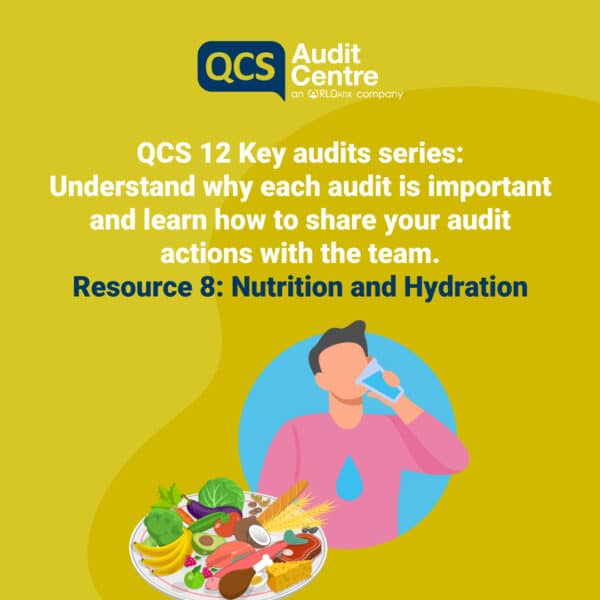Why do we need to complete audits?
To achieve good governance in your service you must demonstrate continuous quality improvement. To do this, auditing and documenting the effectiveness of the processes and systems you have in place, and taking time to observe and document how people experience your service, is essential.
Audits and completed action plans offer evidence of the great care and support you provide. Where improvements are needed, they allow you to demonstrate openly and clearly how you plan to make the changes required that you have identified.
Nutrition and Hydration: the case for auditing
Auditing nutrition and hydration at your service helps you ensure best practice guidelines are being followed and identify any areas of concern. This information can inform your local and senior decision-making, resource allocation, and any training requirements, whilst giving you valuable evidence on overall compliance.
A robust and effective nutrition and hydration audit will support you to reduce the risk of malnutrition and dehydration in service users. Any areas of concern will be investigated in a timely manner, and lessons learned to reduce risk of reoccurrence are shared and embedded.
Auditing nutrition and hydration allows you to identify potential risks specific to the people you support and to the settings you support them in. You can then put in place the necessary measures to deliver that support safely, acknowledging and acting upon identified risk.
- Audits are vital for promoting a culture of continuous learning and improvement
- Audits support providers to examine and improve existing policies, procedures, and practices
- Audits can support and identify areas that require improvement
We know that in delivering our services we support a range of individuals with complex needs, such as older people who may be frail or have dementia, individuals with physical, sensory, and cognitive disabilities, including those with mental health conditions. In addition to these, we also support people on their journey to independence, whether in a step-down rehabilitation bed or a supported living service focused on independent living skills.
Your audit process and structure should be part of your services culture, embedded at the very centre of your good governance and quality assurance processes. If not, then the above description of just another thankless task means that you and your team will gain nothing from the process and instead of being a live document it becomes a time stamped piece of paper completed and shelved as a result.
Nutrition and Hydration: achieving compliance
Audits enable you to provide valid, up to date evidence to the CQC that you are managing Nutrition and Hydration effectively and meeting the required regulations such as:
- Regulation 9: Person-centred care
- Regulation 12: Safe care and treatment
- Regulation 17: Good governance
Findings: what does the nutrition and hydration audit tell you?
Example 1:
An audit revealed MUST scores are not being calculated correctly, as a provider you should:
- Review your Nutrition policies and procedures
- Provide further training and support to staff in MUST calculations
- Ensure MUST scores calculated are re-checked by senior staff every month
Example 2:
An audit revealed fluid or food balance charts do not have the rationale or duration of monitoring stated, as a provider you should:
- Arrange supervision sessions for staff on correct completion of charts
- Add in additional checks of charts by senior staff that may pick up and prevent future failure to complete correctly
So, what happens next?
Effective auditing can encourage providers and staff to have confidence in your processes and in turn foster an open and transparent culture, where staff feel comfortable reporting incidents and near misses especially if this is part of a no blame culture.
But it does not stop once the audit is complete. Your good governance systems then take over creating an environment where learning and improvement thrive, benefiting the safety and well-being of those receiving care and support.
Once you have had a chance to review your audits you can then (if needed):
- Allocate resources
- Implement prevention measures
- Increase/implement/refresh staff training
- Consider environmental changes
- Consider the use of assistive devices
- Share the findings and actions with the team






